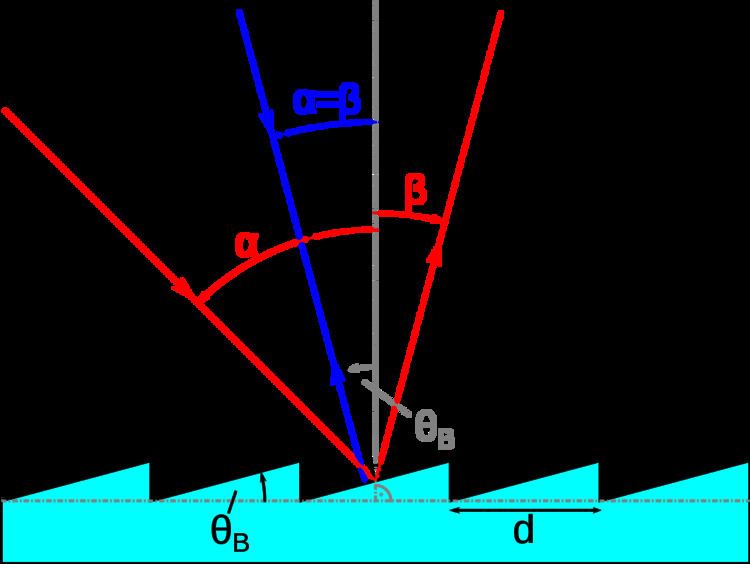 | ||
A blazed grating – also called echelette grating (from French échelle = ladder) – is a special type of diffraction grating. It is optimized to achieve maximum grating efficiency in a given diffraction order. For this purpose, maximum optical power is concentrated in the desired diffraction order while the residual power in the other orders (particularly the zeroth) is minimized. Since this condition can only exactly be achieved for one wavelength, it is specified for which blaze wavelength the grating is optimized (or blazed). The direction in which maximum efficiency is achieved is called the blaze angle and is the third crucial characteristic of a blazed grating directly depending on blaze wavelength and diffraction order.
Contents
Blaze angle
Like every optical grating, a blazed grating has a constant line spacing
The blaze angle is optimized to maximize efficiency for the wavelength of the used light. Descriptively, this means
Littrow configuration
The Littrow configuration is a special geometry in which the blaze angle is chosen such that diffraction angle and incidence angle are identical. For a reflection grating, this means that the diffracted beam is back-reflected into the direction of the incident beam (blue beam in picture). The beams are perpendicular to the step and therefore parallel to the step normal. Hence it holds in Littrow configuration
Diffraction angles at the grating are not influenced by the step structure. They are determined by the line spacing and can be calculated according to the grating equation:
where:
For the Littrow configuration, this becomes
Blazed transmission grating
Blazed gratings can also be realized as transmission gratings. In this case the blaze angle is chosen such that the angle of the desired diffraction order coincides with the angle of the beam refracted at the grating material.
Echelle grating
A special form of a blazed grating is the echelle grating. It is characterized by particularly large blaze angle (>45°). Therefore the light hits the short legs of the triangular grating lines instead of the long legs. Echelle gratings are mostly manufactured with larger line spacing but are optimized for higher diffraction orders.
Echelle gratings are useful in planet-finding astronomy, and are used on the successful HARPS and PARAS (PRL Advanced Radial-velocity All-sky Search) spectrograph.
